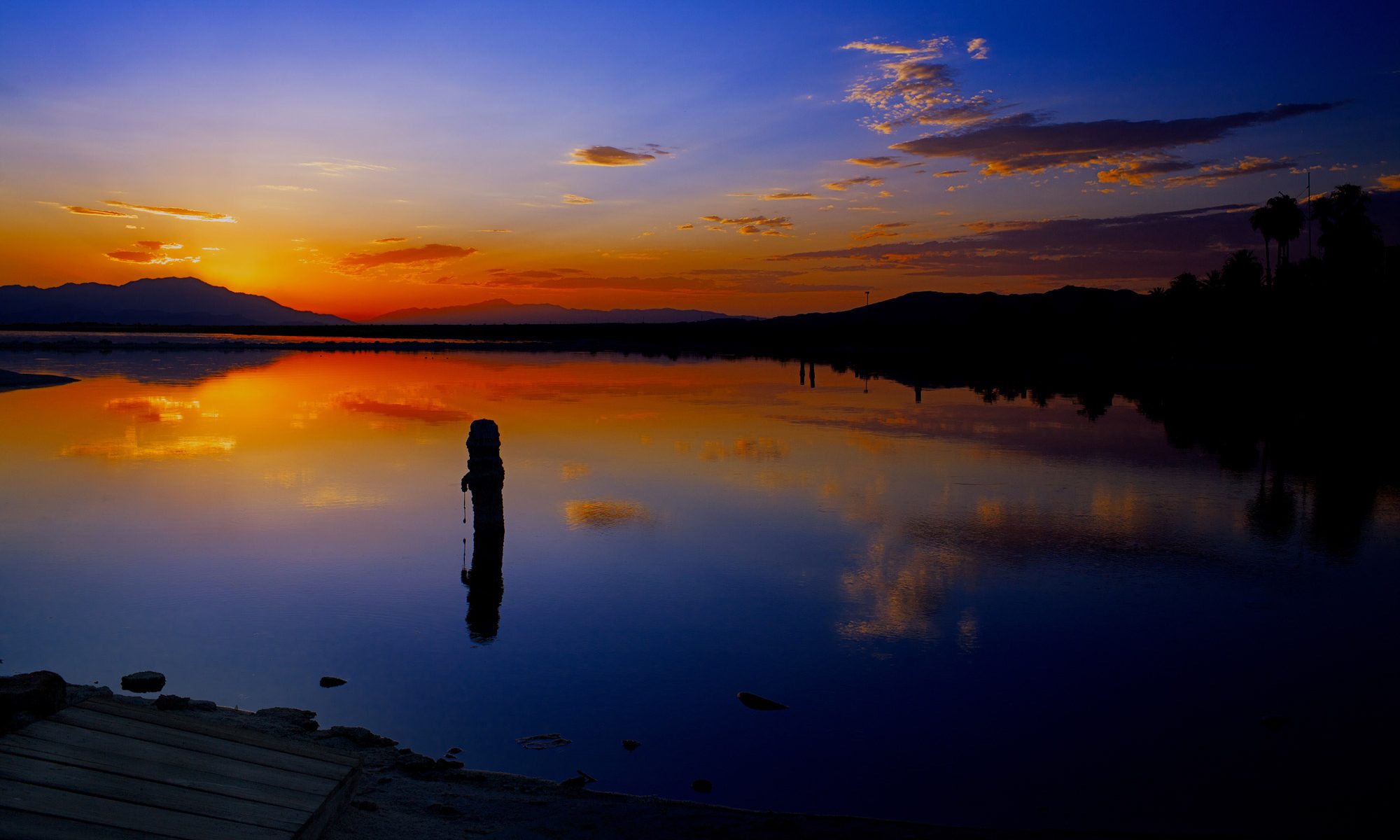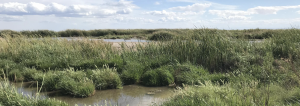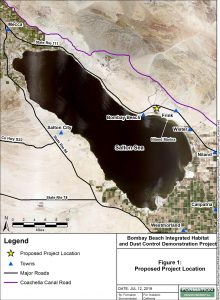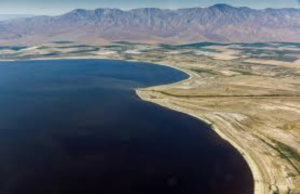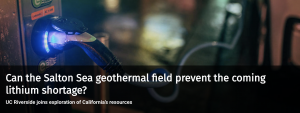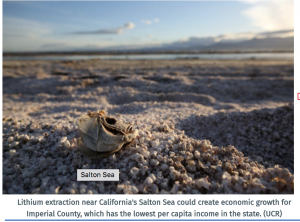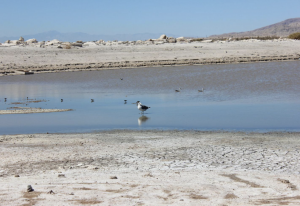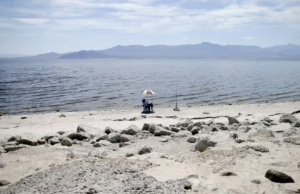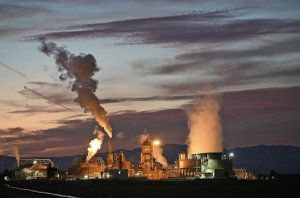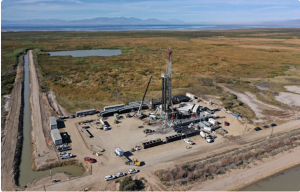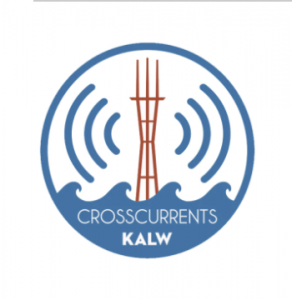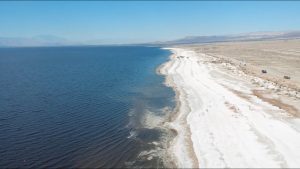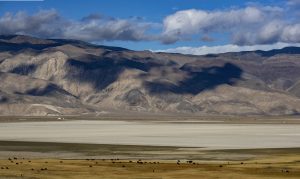Publication Information
California Agriculture 76(1):4-7. https://doi.org/10.3733/ca.2022a0006
Published online April 22, 2022
Summary
In this special issue, California Agriculture presents review articles that highlight what research to date can say about the changing Salton Sea ecosystem and its environmental and human health–related impacts, and identify areas in which further scientific research is needed to better inform policy.
Full text
The Salton Sea, located in Southern California, is a saline terminal lake that has had many identities over the past century or so. Since its reincarnation in 1905 due to lower Colorado River flooding that partially refilled the Salton Sink, it has been California’s largest lake by surface area, covering approximately 350 square miles (Water Education Foundation 2001). In the second half of the 20th century, it was referred to as one of the most productive fisheries in the world, drawing more than 1.5 million annual visitors in the 1960s — more than visited Yosemite National Park at the time — the majority of whom were there for fishing (Cohn 2000; Harris et al. 1969). Throughout the 20th century, with a habitat that supported over 400 species of migratory and resident birds and served as an important stopover along the Pacific Flyway, the Sea warranted recognition as one of the premier bird watching locations in the United States, if not the world (CNRA 2006; Cowan 2014; Schwabe et al. 2008).
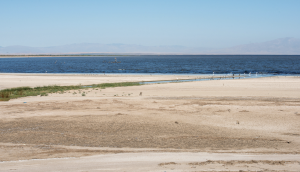
Yet with nearly 90% of its inflow comprised of agricultural drainage waters from the approximately 500,000 acres of irrigated farmland in the Imperial Irrigation District (IID), and exposure to an extremely arid climate that results in excessive evaporation (∼ 1.3 million acre-feet annually), the Sea’s natural attractions have faded as the lake has become more polluted and nearly twice as saline as the ocean (Fogel and Schwabe 2021; Lyons and Hung 2021). Such an outcome was not unexpected given that while the Sea has played many roles in the past, its most well-known if not primary role from a management and water rights perspective has been as a “reservoir for irrigation drainage” (Littleworth and Garner 2017, p. 256).
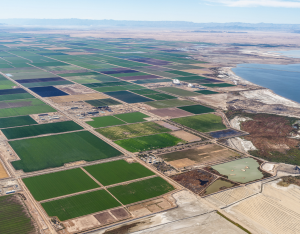
With the passage of the 2002 Quantification Settlement Agreement (QSA) — a local-state-federal agreement that was developed to wean California from regularly appropriating Colorado River surplus flows above the state’s authorized 4.4 million acre-feet and that sanctioned the transfer of water from IID to entities outside of the region beginning in 2003 — the volume and surface area of the Salton Sea has declined. And while this decline won’t likely threaten the Sea’s ranking as California’s largest lake, it has exacerbated the rate of salinization of the Sea (Ajami 2021) and reduced the prevalence of fish and fish-eating birds (Nye et al. 2021). In addition, it has created a new issue that the Sea may become known for — as a contributor to air pollution (Maheshwari et al. 2021). As the Sea recedes, shoreline that was previously submerged becomes exposed and dries. This “playa” has been identified as a source of airborne particles that may worsen regional air quality and exacerbate respiratory illness and asthma rates that are already far above state averages (Bahreini et al. 2021; Parajuli and Zender 2018). Furthermore, as it continues to decay and decline, the Sea itself may become a more significant source of airborne toxins that negatively impact human health (Biddle et al. 2022 and Freund and Maltz et al. 2022, this issue).
Another role that has the potential to define the Salton Sea for years to come is as an important region for renewable energy development, specifically as a site for geothermal energy production and lithium extraction for use in batteries. Geothermal energy has been produced in the Salton Sea region for over four decades (McKibben et al. 2021), and the rise in worldwide lithium demand for supplying electric vehicle batteries coupled with the complementary nature of lithium extraction from existing geothermal energy production processes may provide a boon to the expansion of both industries around the Salton Sea. Such expansion is not surprising given that the Salton Sea region has the largest undeveloped reserves of geothermal energy and lithium in the world (McKibben et al. 2021), with possible revenues from the lithium deposits in the Imperial Valley part of the region alone of nearly $860 million annually (California Energy Commission 2020). Recent matched investments by CalEnergy (∼$6 million), a local producer of geothermal energy, and the California Energy Commission (∼$6 million) for a lithium extraction pilot project is likely a hint of the possibilities ahead. Of course, what is unknown is how the expansion of these industries can, or will, contribute to the region in terms of development, income and employment — a region characterized by some of the highest rates of unemployment and poverty in the state — and impact environmental quality.
In response to these possibilities, along with prior commitments to mitigate expected environmental problems arising from the QSA, local, state and federal governments are investing significant resources into the Salton Sea. Since 2014, California has set aside nearly $345 million for restoration and environmental mitigation-related activities surrounding the Salton Sea, while the federal government has earmarked another $1.4 million (Fogel and Schwabe 2021; SSA 2022). These funds include such appropriations as nearly $80 million from the 2014 passage of California’s Proposition 1 bond, $200 million from passage of Proposition 68 in 2018, $7.5 million in a 2017 grant from the U.S. Department of Agriculture to support regional conservation partnerships, $30 million in support for the U.S. Army Corp of Engineers for water resources development passed in 2016, and a $14 million award in 2016 by the California Wildlife Conservation Board for sustaining migrating birds and the fish they rely on through wetland habitat restoration.
What the above discussion illustrates is how complex and dynamic the Salton Sea situation is, how management (or mismanagement) of the Sea for one particular role or purpose inevitably has impacts on its other possible roles and opportunities — with real consequences on human and environmental health — and how a significant amount of money has been appropriated for investing in developing plans to address the environmental and human health concerns surrounding the Salton Sea. Because of the delayed response in developing and implementing actual mitigation plans to counter the expected environmental and health-related consequences associated with the QSA until more recently, there has been a common refrain to cease with the studies and move forward with shovel-ready mitigation projects (Byrant 2021).
Unfortunately, and as emphasized in Fogel and Schwabe (2021), the science and data behind many of the state’s plans are either outdated or incomplete. As such, the returns on those significant investments are questionable, as are the outcomes. A more prudent approach than treating investments in research and investments in shovel-ready projects as mutually exclusive is to view the investments in research as a necessary and critical complement to developing efficient, sustainable and informed projects that are based on the best available science and to continue to monitor the effectiveness of such projects so they do provide justifiable and real returns to society in the form of improved human and environmental health.
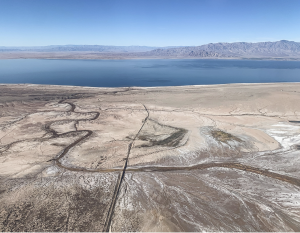
In an effort to contribute to a better understanding of some of the critical questions surrounding the Salton Sea and the “state of the science,” this issue includes three papers that span issues associated with ecology/hydrology, the microbiome, and air quality and health. In the first paper, titled “Ecological Transitions at the Salton Sea: Past, Present and Future”, (Bradley et al. 2022), the authors provide a brief history of the formation of the Salton Sea, highlighting the fact that it is not a temporary fixture in Southern California but has been an integral part of the region for thousands of years. Yet, while the Sea was a relatively stable ecosystem for most of the 20th century, recent agricultural-to-urban water transfers have caused significant impacts on the ecology of the Sea, including the expected loss of all fish and the fish-eating birds that are reliant on them. And whereas research in the 1990s and early 2000s provided evidence and predictions describing much of what is being observed, the ecology of the system has changed significantly since that time, such that our understanding of the consequences of continued changes in flows into the Sea on the ecology and chemistry of the Sea is very limited. Without further research into the evolving chemistry and ecology of the Sea, and a better understanding of the hydrology of the region, particularly with respect to the surface water-groundwater interactions, the effectiveness of any proposed Salton Sea management plan is speculative at best with potentially significant negative outcomes.
